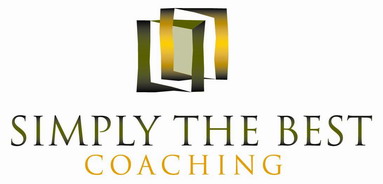How You Think Determines How You Lead
Critical thinking is essential to making good decisions. It engages you in learning what works, what doesn't work, and what would work better.
Critical thinking tests your willingness to consider different points of view. It asks you to question assumptions and examine expectations - whether obvious, subtle, unexpressed, understated, or 'undiscovered territory'.
Knowing whether you're a linear, lateral, or circular thinker helps you navigate the uncertainty leaders experience when discerning the best possible decision to make.
YOUR BRAIN IDENTITY
Which of the following characteristics of linear, lateral, or circular thinkers best describes you? Be candid. Select one...
Linear Thinkers (left-brain dominant)
- Prefer a logical, sequential structured (step-by-step) progression
- Focus on details - organizing, planning, and doing things in precise order
- Define meaningful categories, streamlines and systemizes options
Lateral Thinkers (right-brain dominant)
- Prefer to look at the big picture and understand concepts
- Focus on what is being overlooked - challenging assumptions
- See novel cross-connections that form creative alternatives
Circular Thinkers (right & left-brain co-dominant)
- Prefer to scan all information - big picture and details
- Focus on all possibilities - everything being done and thought
- Circle around different possibilities and indirectly land on solutions
WHOLE BRAIN THINKING
Numerous techniques and tools have been designed to improve linear and lateral thinking. Yet there doesn't appear to be much of anything available to assist circular thinkers, even though circular thinking has the potential to access more of the human brain.
The Medicine Wheel in Native American Tradition spontaneously came to mind when a client described her natural, yet frustratingly unproductive, circular thinking process. Karen (name changed for client confidentiality) works with people in different cultures and traditions. She was very receptive to a modern day practice that would connect her way of reaching decisions with a centuries-old approach to whole brain thinking.
A CIRCULAR THINKING DECISION MODEL
In Native American culture the Medicine Wheel consists primarily of 4 directions - East, South, West and North - with a center point. The simplicity of it as a Circular Thinking Decision Model is a function of these 5 basic parameters.
Travel this circle from East to North as many times as it takes for you to address whatever is present in each direction. Let the challenges and opportunities engage you in new ways of seeing and thinking about what is possible. Allow what get revealed in the circle to lead you to the best possible decision.
HOW TO USE THIS TOOL
Take a blank piece of paper. Fill it with a large circle. On it write the 4 directions. Then begin your journey from East to North - jotting down your responses to the decision making points in each direction. The points listed below align with the energy resident in each direction of the Medicine Wheel.
Center (focal point) - Decision You Need to Make
- Clarify the decision you need to make
- Where are you now?
- What needs to change or be better?
- Describe desired future and intended results
- What options exist?
- What opportunities exist - seen and unseen?
- Write down your ideal outcome
- What would need to happen to reach that outcome?
- What crucial factors influence or impact your decision?
East (right side of circle) - Resources Available to Make a Good Decision
- Expertise
- Experience
- Information
- People: Team / Staff / Partners / Collaborators
- Finances
South (bottom of circle) - What Decision Maker Brings
- Skills
- Talents
- Resources
- Natural gifts
West (left side of circle) - What You Need to Make a Smart Decision
- Question assumptions and expectations
- Ask different types of questions
- See possibilities that emerge
North (top of circle) - What Decision Wants to Be Made
- New insights
- Deeper understanding
- Greater knowing and wisdom
Test this circular thinking decision making tool by moving through all 4 directions of the Medicine Wheel. Notice the clarity you experience. See how this traditional wisdom practice engages you in transformative critical thinking — empowering you to make smarter decisions.


